Sable German Shepherd: Origin, Traits, Care & Working Heritage
The Sable German Shepherd is a classic variation of the German Shepherd breed known for its distinct coat color that closely resembles the breed’s original look. This dog stands out not only because of its sable-colored fur but also due to its intelligence, loyalty, and strong working abilities. It appeals to active families, individuals, and professionals who want a dog that is both a dependable companion and a capable working partner.
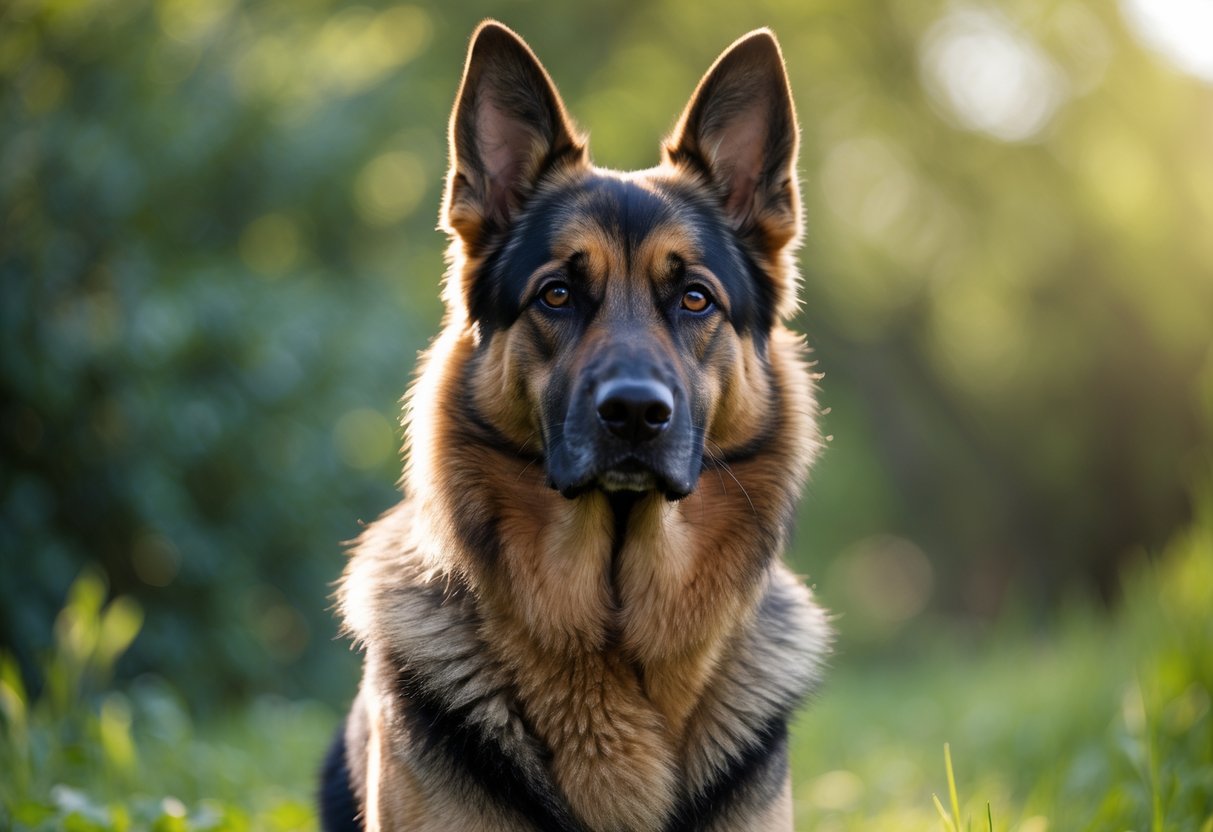
This breed carries a rich history linked to the foundation of the German Shepherd and maintains traits that make it suitable for work, protection, and family life. Its appearance is marked by a mix of tan and black-tipped fur, giving it a wolf-like look that few other coat colors can match. Beyond looks, the Sable German Shepherd is known for being confident, protective, and highly trainable, making it a popular choice among dog lovers worldwide.
Key Takeways
- The Sable German Shepherd is valued for its loyal nature and working skills.
- It features a unique and historic coat color that reflects the breed’s origins.
- Proper care, socialization, and training are important for this intelligent and active breed.
Defining the Sable German Shepherd
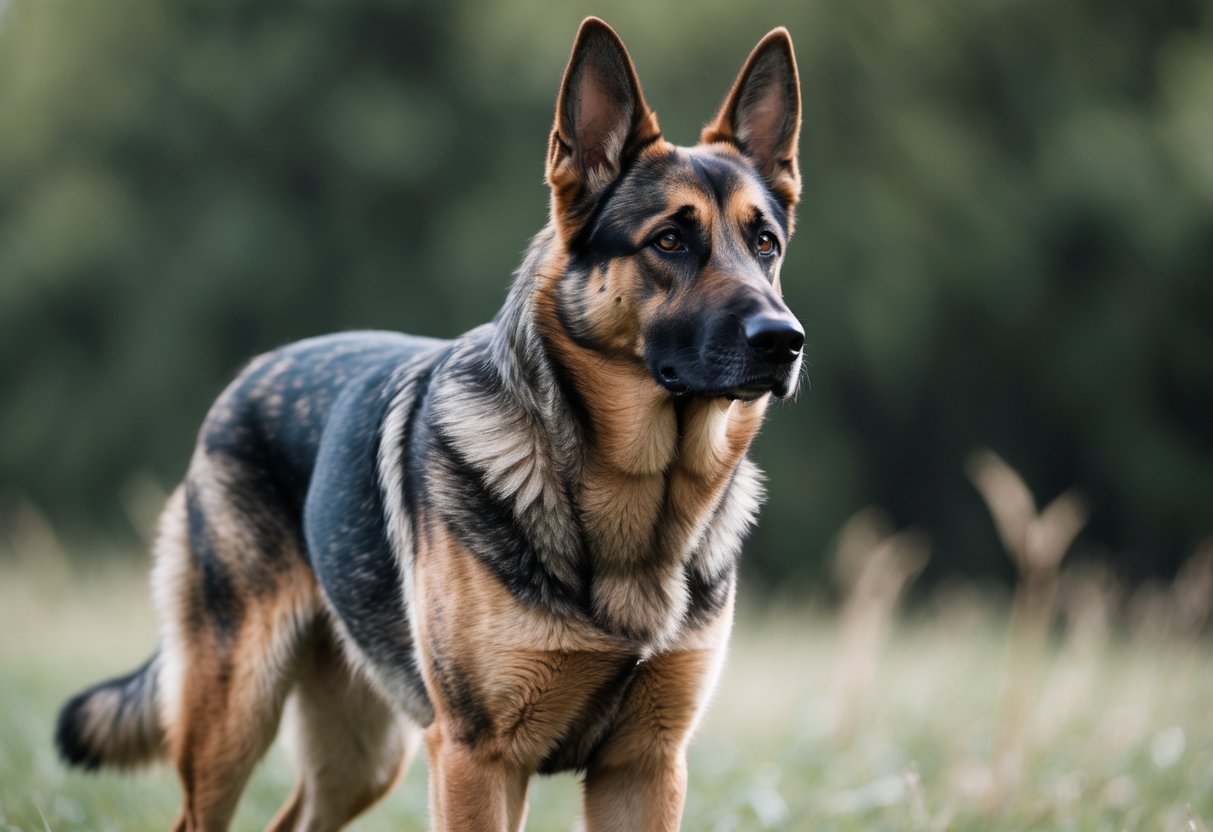
The Sable German Shepherd stands out mainly because of its unique coat color and pattern. This dog’s appearance often resembles that of a wolf due to its distinctive fur. Its traits and behavior closely align with those of standard German Shepherds but with some visual differences that shape its identity.
What Makes Sable German Shepherds Unique
Sable German Shepherds are known for their striking coat, which shows a mix of light and dark colors on each hair. This gives the dog a layered, wolf-like look that differs from typical tan or black-and-tan German Shepherds. The sable pattern creates a gradient from a lighter root near the skin to darker tips on the hair.
Beyond appearance, these dogs carry the same intelligence, loyalty, and protective instincts as other German Shepherds. They are active, highly trainable, and require mental and physical exercise daily. Their temperament is confident and alert, fitting their role in service and family environments alike.
Sable Color and Genetics
The sable color in German Shepherds comes from a genetic trait characterized by individual hairs that are lighter at the base and darker, usually black, at the tips. This causes the coat’s shaded effect, which can vary from light gray or brown near the skin to solid black tips.
This coat pattern is dominant in some lines and considered one of the oldest original colors in the breed’s history. The sable gene affects guard hairs specifically, and the amount of sable expression can differ, making each sable dog’s coat unique. This genetic trait is unrelated to other common German Shepherd colors like black-and-tan or solid black.
Differences from Other German Shepherd Variants
The main difference between sable and other German Shepherd variants lies in the coat’s color pattern and texture. Regular German Shepherds usually have flat coats with clear markings, like a two-tone tan and black layout. In contrast, sables display a shaded, blended look with dark hair tips and lighter roots.
Behaviorally, sable German Shepherds do not significantly differ from other variants. They share the breed’s common traits, such as protecting their family, working well with training, and needing high energy output. Sables, however, tend to be rarer and sometimes more expensive due to their distinctive appearance and genetic background.
Historical Origins and Breed Background
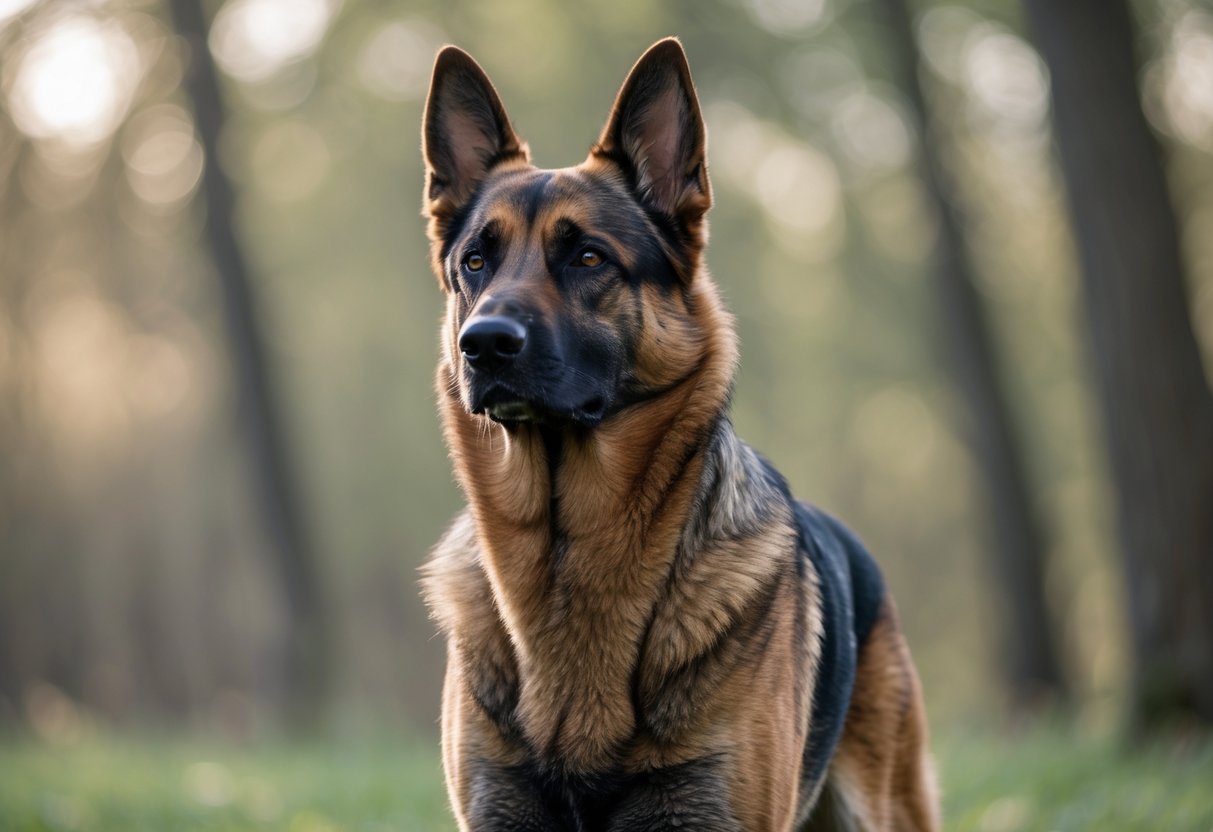
The Sable German Shepherd has deep roots linked to the origin of the German Shepherd dog breed. Its development involved careful selection for work ability, intelligence, and loyalty. The breed’s early history includes key figures and foundational dogs that helped shape it into the versatile, working dog it is today.
The Role of Max von Stephanitz
Max von Stephanitz is the founder of the German Shepherd breed. In the late 1800s, he aimed to create a dog that combined strength, intelligence, and loyalty. Stephanitz believed a dog should be excellent at work and adaptable to many tasks, including guarding and herding.
He focused more on the dog’s abilities than its color or appearance. Stephanitz attended dog shows to find dogs with the traits he wanted. His strict breeding and selection set the tone for developing German Shepherds as hard-working companions and protectors, which remains a priority in working lines today.
Horand von Grafrath and Early Bloodlines
Horand von Grafrath was the first registered German Shepherd and played a crucial role in defining the breed. Discovered by Max von Stephanitz at a dog show, Horand was a sable-colored dog. This color was one of the first recognized and remains genetically dominant within the breed.
Horand’s traits—intelligence, confidence, and work ethic—became the standard for all future German Shepherd bloodlines. Breeders carefully line-bred dogs related to Horand to maintain these characteristics. The sable coat, linked to Horand, is still prized for its connection to the breed’s original form.
Development of Working Dog Traits
The German Shepherd was developed primarily as a working dog. From the beginning, breeders concentrated on traits like stamina, obedience, and strong work drive. These qualities made the dogs suitable for herding, police work, military roles, and rescue missions.
Working-line German Shepherds are different from some pet or show lines. They often have physical features designed for endurance and functionality rather than just appearance. Traits such as confidence, intelligence, and the need for mental and physical challenges define these working dogs, whose sable coloring reflects a link to the breed’s early, practical roots.
Physical and Behavioral Characteristics
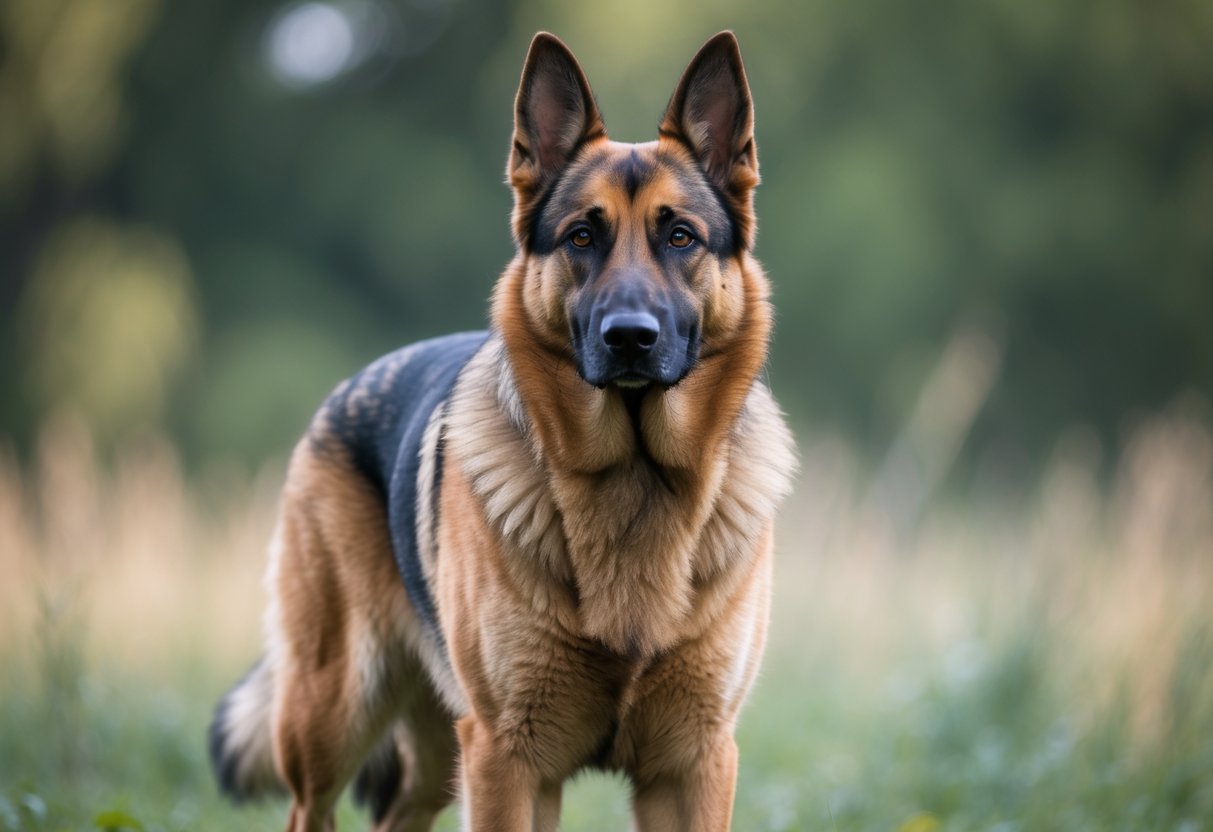
The Sable German Shepherd combines physical strength with sharp intelligence and a strong work drive. It has a well-defined body structure, unique coat qualities, and clear behavioral traits rooted in its history as a herding and working dog.
Appearance and Size
The Sable German Shepherd is a large dog with a muscular and athletic build. Males typically stand 24 to 26 inches tall at the shoulder and weigh between 75 to 95 pounds. Females are slightly smaller, measuring 22 to 24 inches and weighing 55 to 73 pounds.
Its body is longer than tall, creating an S-shaped profile with a higher front compared to the rear. The head is strong with a long muzzle, black nose, and erect, pointed ears positioned on top of the skull. Eyes are dark brown and expressive.
This dog carries a powerful presence, resembling its working dog origins, with physical strength suited for demanding tasks.
Sable Coat and Double Coat Structure
The sable coat is the defining feature of this Shepherd, showing a blend of tan, gold, and black-tipped hairs. This gives the dog a rich, layered look that changes slightly with light and angle.
Sable German Shepherds have a double coat, which means they have two layers of fur. The outer layer is coarse and straight, designed to protect against harsh weather. The undercoat is soft and dense, keeping the dog warm in colder climates.
Typically, the coat type is medium length, though long-haired versions exist. Medium coats are preferred for breed standards, especially in competitions. Regular shedding happens twice a year, increasing in warmer seasons.
Temperament and Intelligence
This breed is known for being confident and highly trainable, showing a natural eagerness to learn and please its owner. The Sable German Shepherd is patient and responds well to consistent training.
Intelligent and protective, it has a strong sense of loyalty. This dog is cautious around strangers but rarely aggressive unless provoked or sensing danger. Early socialization is critical to balance its high prey drive.
Mentally sharp, this breed thrives on tasks that challenge both mind and body. It excels in obedience training, making it suitable for roles in police, military, and search and rescue work.
Herding Instincts and Wolf-Like Features
Sable German Shepherds retain strong herding instincts from their origins as livestock protectors. They are alert and vigilant, naturally protective of their family and territory.
Their wolf-like appearance is clear in their body shape, erect ears, and intense gaze. This physical resemblance also reflects their genetic link to wild ancestors.
These features contribute to their suitability as working dogs. Their ability to assess threats and quickly decide on a response shows a blend of intelligence and instinct honed over generations.
Training, Socialization, and Work
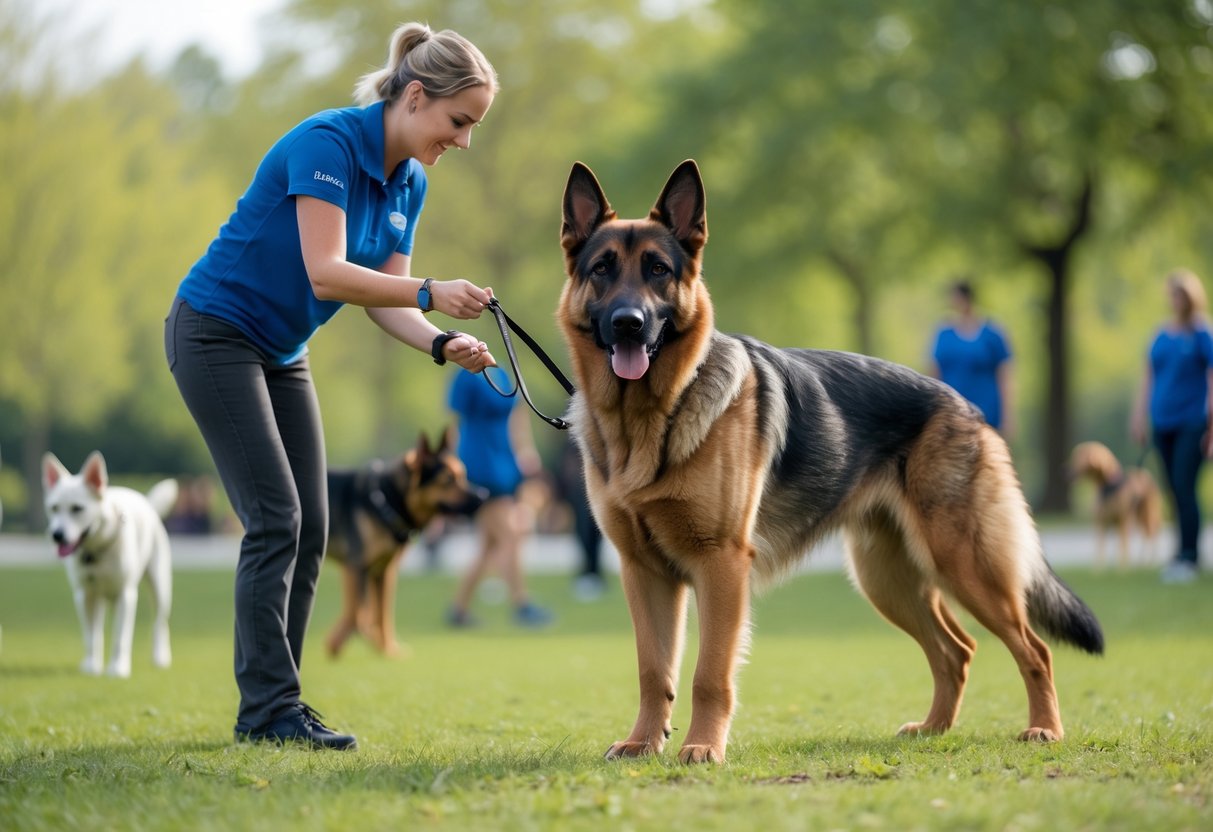
Sable German Shepherds require clear guidance and consistent routines to reach their potential. Proper training, early socialization, and channeling their natural skills into productive activities help shape well-behaved and confident dogs ready for various demanding roles.
Obedience Training Essentials
Obedience training for sable German Shepherds should begin early, using positive reinforcement such as treats and praise. These dogs respond best to consistency and structure.
Commands like sit, stay, come, and heel are foundational. Training sessions should be short but frequent to keep the dog engaged without causing frustration.
This breed is intelligent and eager to learn, so introducing advanced obedience tasks can be effective once basics are mastered. Early obedience helps prevent behavioral problems and establishes the owner’s role as a firm but fair leader.
Importance of Early Socialization
Starting socialization as soon as a sable German Shepherd puppy comes home is critical. Exposure to different people, animals, environments, sounds, and situations builds confidence and reduces fear or aggression.
Without early socialization, these dogs may become wary or territorial, especially around strangers. Positive, controlled introductions to new experiences help them remain calm and adaptable.
Owners should expose puppies to children and other pets, encouraging gentle interactions. Proper socialization supports their role as both family companions and working dogs, fostering balance between protectiveness and friendliness.
Sable German Shepherds in Dog Sports
Sable German Shepherds excel in dog sports because of their intelligence, agility, and work drive. Sports like Schutzhund test obedience, tracking, and protection skills, suiting their natural talents.
Participation in agility, obedience trials, and tracking keeps them physically and mentally stimulated. These activities prevent boredom and channel their energy constructively.
Training for dog sports also reinforces discipline and strengthens the bond between dog and owner. The breed’s quick learning ability makes them competitive in these fields, provided they receive consistent practice.
Roles as Police and Service Dogs
Sable German Shepherds are often chosen for law enforcement and service work due to their loyalty, intelligence, and protective instincts. As police dogs, they assist in tracking, search and rescue, and suspect apprehension.
Their strong work ethic and trainability allow them to learn complex tasks, such as detecting substances or guiding individuals with disabilities.
Service dog training builds on obedience and socialization, ensuring the dog can operate calmly in public settings. Their ability to focus under pressure makes them excellent candidates for many professional roles.
Health, Care, and Lifespan
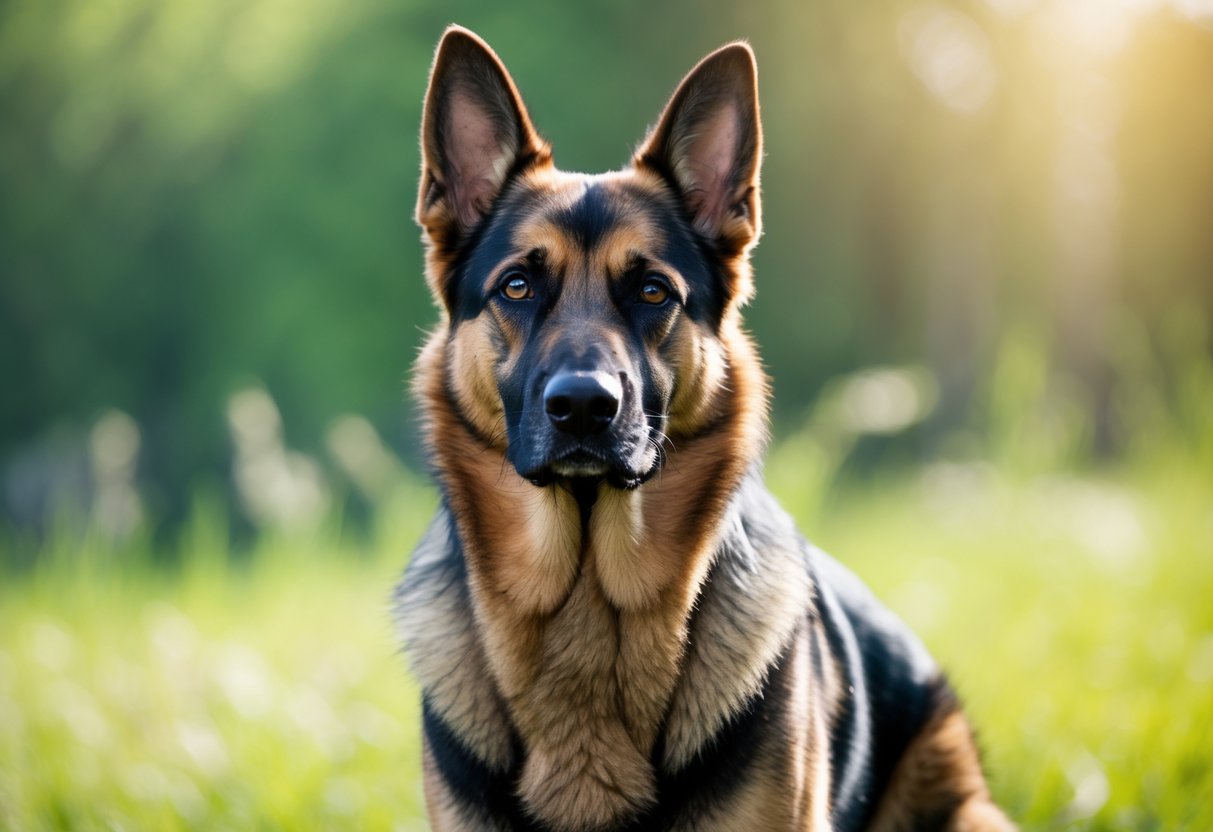
The Sable German Shepherd requires attention to specific health risks, proper grooming, and a balanced diet with regular exercise. These factors play a key role in helping the breed live a full life, typically between 9 to 13 years. Owners must understand these essentials to support their dog’s wellbeing.
Common Health Issues
Sable German Shepherds are prone to hip dysplasia and elbow dysplasia, conditions where the joints develop abnormally. These can cause pain and mobility problems. Early detection through regular vet exams helps manage symptoms.
They are also at risk of degenerative myelopathy, a disease affecting the spinal cord, leading to weakness and paralysis in the hind legs. There is no cure, but physical therapy can improve quality of life.
Other concerns include allergies and digestive problems. Genetic testing and careful breeding reduce risks. Owners should carefully watch for signs of discomfort or behavioral changes and seek veterinary care when needed.
Grooming and Coat Maintenance
The Sable German Shepherd has a dense double coat that protects it in various climates. This coat requires regular grooming, about 2-3 times per week, to reduce shedding and prevent matting.
During shedding seasons, daily brushing becomes necessary to manage loose fur and maintain skin health. Bathing is recommended only when necessary to avoid drying out the skin.
Routine checks for parasites, ear cleaning, and nail trimming are important parts of grooming. Grooming sessions can also help owners notice any skin issues or lumps early.
Exercise and Nutrition Needs
This breed needs daily exercise to stay healthy and avoid behavioral problems. Activities like brisk walks, running, obedience training, and play stimulate both mind and body.
A well-balanced diet with high-quality protein supports muscle strength. Overfeeding should be avoided to prevent obesity, which worsens joint issues like hip dysplasia.
Puppies require specially formulated puppy food to support their growth and development. Regular meal portions help maintain a healthy weight throughout life.
Consistent exercise and good nutrition support a Sable German Shepherd’s health and longevity.
Living with a Sable German Shepherd
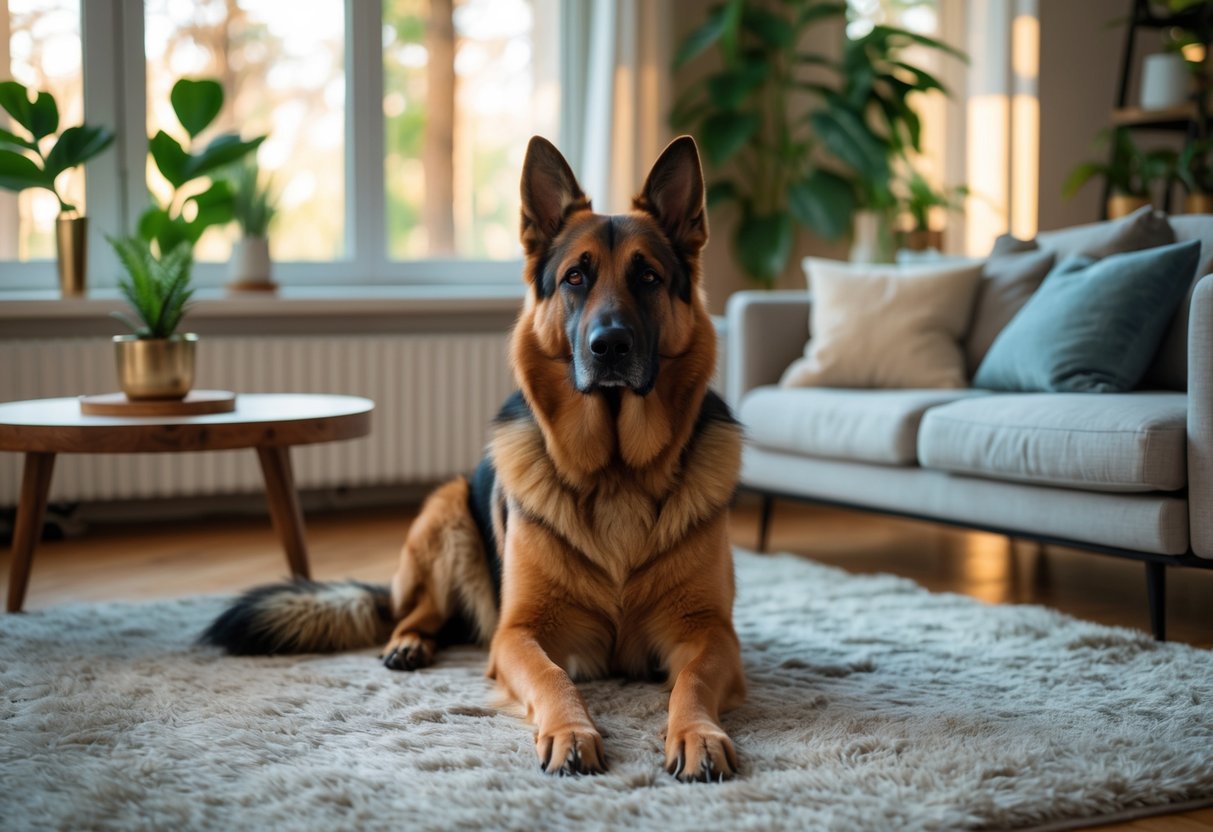
A Sable German Shepherd requires an active lifestyle and careful decision-making to fit well into a home. Understanding their needs for training, socialization, and exercise helps ensure a positive experience for both the dog and owner. Choosing a responsible breeder or considering adoption impacts the puppy’s future health and behavior.
Family Compatibility and Lifestyle
Sable German Shepherds thrive in homes where their energy and intelligence are matched with engagement and structure. They do well with active families who can provide daily exercise, such as walks or playtime, and mental challenges like obedience training or agility.
They are loyal and protective, making them good guard dogs and companions for families, including those with children. However, their strong-willed nature means early socialization is key to reduce shyness or aloofness toward strangers.
Families should be prepared for consistent commitment to training, as this breed can become bored or destructive without stimulation. Quiet or sedentary homes may struggle to meet their needs.
Finding a Responsible Breeder
Selecting a responsible breeder is crucial for acquiring a healthy German Shepherd puppy. A good breeder will prioritize health screenings to avoid hereditary issues such as hip dysplasia, common in the breed.
Breeders should provide clear lineage information, vaccination records, and socialization from an early age. Visiting the breeder’s facility ensures that puppies are raised in clean, safe conditions and are well-exposed to human interaction.
Beware of breeders who do not offer this transparency or push for quick sales. Responsible breeders also provide ongoing advice for care and training, supporting owners beyond the purchase.
Adoption and Puppy Considerations
Adopting a Sable German Shepherd from a rescue or shelter is an option for many. Potential owners should research the dog’s background, health history, and temperament before adoption.
For those choosing a puppy, early socialization from about eight weeks old through the first year is essential. This period shapes their behavior around people, animals, and new environments.
Puppies need a balanced diet formulated for large, active breeds and regular veterinary care. Introducing basic obedience and mental exercises early helps manage their intelligence and high energy.
Both adoption and purchasing from a breeder require commitment to raising a well-rounded, healthy dog.
Frequently Asked Questions
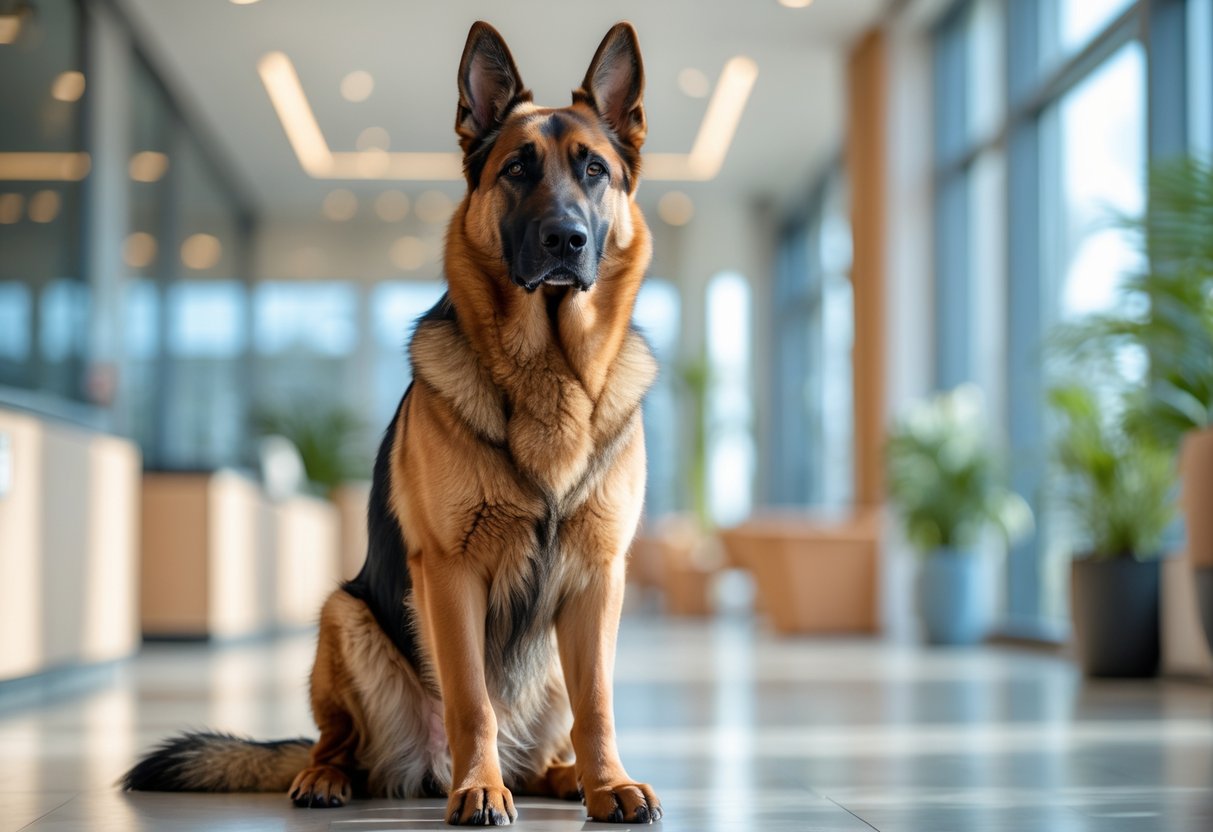
The Sable German Shepherd has unique features in its appearance, behavior, and care. Its coat pattern, genetic background, health risks, training needs, and diet all require specific attention for proper management.
What are the distinct characteristics of a Sable German Shepherd’s coat?
The sable coat is made of hairs with multiple color bands. Each hair strand usually has colors like tan, red, silver, or brown with black tips. This gives the dog a shifting, multi-colored look that changes over time.
The coat is double-layered, providing warmth and protection. It can be medium or long in length, and the sable pattern is the original color of early German Shepherds.
How does the temperament of a Sable German Shepherd differ from other German Shepherd varieties?
The temperament of a sable German Shepherd is similar to standard German Shepherds. They are intelligent, loyal, and protective.
They tend to be more people-oriented and develop strong bonds with their owners. Despite their tough appearance, they are affectionate and playful, especially with proper training and socialization.
What are the genetic factors that determine the sable coat color in German Shepherds?
The sable coat color is controlled by a specific gene also found in wolves. This gene causes each hair to have multiple color bands with black tips.
Unlike other German Shepherds that have clearly defined black and tan patches, the sable’s coat colors blend and change as the dog grows.
What are the specific health concerns to be aware of when caring for a Sable German Shepherd?
Sable German Shepherds are prone to hip dysplasia, a joint problem common in the breed. Other possible health issues include bloat, diabetes, bladder stones, cataracts, and thyroid problems.
Regular vet checkups are important to catch any problems early. Choosing a healthy puppy from a responsible breeder helps reduce health risks.
How should one properly train and socialize a Sable German Shepherd puppy?
Early socialization is important because sable German Shepherds have a natural protective instinct and high prey drive. They need to meet different people, animals, and experience new places to reduce fear and aggression.
Training should start young and be consistent. These dogs respond well to positive reinforcement and enjoy learning new tasks.
What are the best dietary practices to maintain the health of a Sable German Shepherd?
A high-protein, moderate carbohydrate, and low-fat diet supports their active lifestyle. Feeding should be measured according to the dog’s weight.
Avoid exercise right after meals to prevent bloat. Specialized German Shepherd dog food with quality ingredients helps maintain muscle and joint health.
